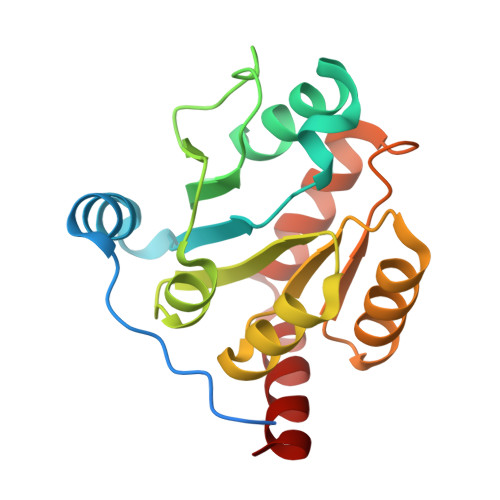Insight into tartrate inhibition patterns in vitro and in vivo based on cocrystal structure with UDP-glucuronosyltransferase 2B15.
Zhang, L., Zhu, L., Qu, W., Wu, F., Hu, M., Xie, W., Liu, Z., Wang, C.(2019) Biochem Pharmacol 172: 113753-113753
- PubMed: 31837310
- DOI: https://doi.org/10.1016/j.bcp.2019.113753
- Primary Citation of Related Structures:
6IPB - PubMed Abstract:
Glucuronidation, catalyzed by UDP-glucuronosyltransferases (UGTs), is a crucial substance metabolism and elimination process that mostly occurs in the liver to protect the body from toxic substances and maintain homeostasis. The reaction functions well in a uridine diphosphate glucuronic acid (UDPGA) -dependent manner in vivo. However, the mechanism for recognizing UDPGA or analog has not been reported so far. Here, through X-ray crystallography, we present a 1.78 Å cocrystal structure of the C-terminal domain of UDP-glucuronosyltransferase 2B15 (2B15CTD, K284-H451) bound by tartrate, which reveals the detailed recognition mechanism of UDPGA analog at the active site. Using surface plasmon resonance techniques, protein thermal shift studies, and limited proteolysis, we determine that tartrate stabilizes the conformation of 2B15CTD thermodynamically. The biochemical analysis further elucidates that two residues, S312 and T374, are essential for the interactions between 2B15CTD and tartrate. We also investigate the pharmacological effects of tartrate on UGTs based on the cocrystal structure of UGT2B15 and experiments performed in vitro and in vivo. In brief, the LC-MS/MS analysis shows that tartrate has a significant inhibitory effect towards UGT2B15 (K i = 91 µM), and oral administration of tartrate to FVB mice can reduce the relative plasma concentration of glucuronide. These results reveal an unexpected physiological role of tartrate in the maintenance of UGTs function. Therefore, tartrate is a potential inhibitor of UGTs, and the excess tartrate in the diet may disturb body homeostasis and inhibit the metabolism of UGT substrates by interfering with glucuronidation.
Organizational Affiliation:
Guangdong Key Laboratory for Translational Cancer Research of Chinese Medicine, Joint Laboratory for Translational Cancer Research of Chinese Medicine of the Ministry of Education of the People's Republic of China, International Institute for Translational Chinese Medicine, Guangzhou University of Chinese Medicine, Guangzhou, Guangdong 510006, China.
















